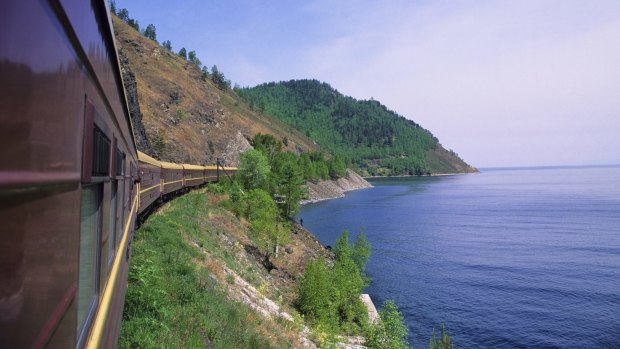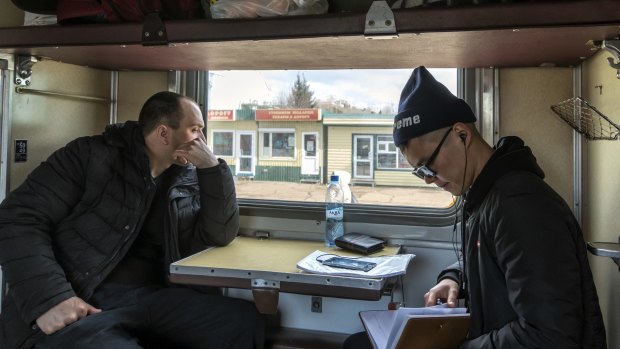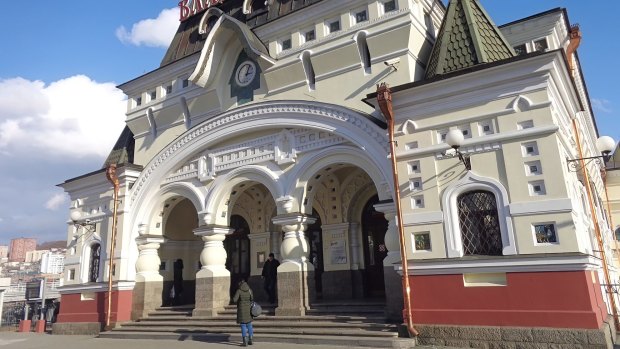The Trans-Siberian and Trans-Mongolian train journeys: Experts' tips on doing the epic rail trips
By Ben Groundwater

The Trans-Siberian stretches 10,000km from Moscow all the way to Vladivostok.Credit: Getty Images
"Well it's the great granddaddy of them all, isn't it?" says Mark Smith, leaning back in his chair as he considers one of the world's great journeys, the Trans-Siberian, the 10,000 kilometres of railway track that stretches from Moscow all the way to Vladivostok.
This train trip, together with its alternative route, the Trans-Mongolian from the Russian capital to Beijing, are names that are instantly recognisable to so many travellers, that sit close to the top of many a list of fantasy experiences. These are iconic train journeys that cover almost unbelievable swathes of the world, transporting passengers across continents, across cultures, across civilisations. They're also intimidating journeys for first-timers, ones that can seem almost impossible to plan and execute.
Mark Smith is better known to his legions of followers as "The Man in Seat 61", a train-travel fanatic who runs the respected repository of all rail knowledge, seat61.com. He's done both the Trans-Siberian – Moscow to Vladivostok in seven days, eight nights – and the Trans-Mongolian, which takes five days and six nights to travel from Moscow, via Ulaan Baator in Mongolia, to Beijing, and he says these journeys truly are the pinnacle.

Amur Bridge over the Amur River in far eastern Russia.Credit: iStock
"What's incredible about the Trans-Siberian is that people have got this image of it as an isolated Russian curiosity, winding single-track with one train a month that goes from Moscow to somewhere called Vladivostok," says Smith, speaking from his home in the UK. "But actually, it's a double-track electrified railway, just one part of the massive Russian rail network, and you can use it to travel by train from London, Paris or Berlin, through Moscow, not just to Vladivostok but Beijing, and through Beijing to Hong Kong and Shanghai and even Hanoi in Vietnam."
The old cliché of travel – "it's the journey, not the destination" – has never been truer than it is on these famous routes. Moscow is amazing, Beijing incredible. Vladivostok, to a lesser extent, is also interesting. However, the time spent aboard these trains, rattling through Siberia and across the Mongolia Steppe, meeting locals, eating local food, taking in culture on board while watching the world change through the window, is truly something else.
Monisha Rajesh is a UK-based journalist and author of the book Around the World in 80 Trains, and she says that on the Trans-Mongolian she was struck by the way these disparate parts of the globe, Russia and China, Moscow and Beijing, blended together when viewed from a train.

Travelling the Trans-Siberian and Trans-Mongolian can be a cheap trip and a chance to meet plenty of locals.Credit: iStock
"It's the connector that brings the west and the east together," Rajesh muses. "I felt very much that if I had just got to Moscow and flown to Beijing, I would have felt like we were in two different worlds, but actually seeing that gradation of change between Moscow and Beijing, not just in the landscape, but in the food we were eating, you could see how the cuisine was changing really slowly, the flavours were different … You could see how things changed very gradually, and that idea that we're very different from one country to the next is not actually true.
"Even in the way people looked, their facial features, you're starting off with blonde and blue-eyed, and at the other end people have got black hair and dark eyes, but in between you had everything. You could see how that slow filter of change happens. And in an odd way, despite feeling very displaced a lot of the time on board, I had a much better sense of space by the end, and I was so aware of that distance and what it felt like. And at the same time, you actually see how close we all are."
There are several ways for travellers to experience this journey, several different pathways, several levels of service. There are actually three main routes to choose from: the Trans-Siberian, the Trans-Mongolian, and the Trans-Manchurian train, which skips Mongolia and goes to Beijing via Harbin in northern China. Most trains are public, working services, either Russian or Chinese, which will be filled with local commuters. There are also several luxurious private trains, which come at a far greater cost and offer many more of the creature comforts.

Final stop: Vladivostok's railway station. Credit: iStock
For Smith, the best way to do it is the Trans-Mongolian, on local services.
"You have to draw a distinction between cruise trains, that are really aimed at tourists and often cost a lot of money, and the Trans-Siberian, which is a real working railway," says Smith. "You travel in four-berth second-class sleepers, or first-class two-birth sleepers, there are no ensuites, the best you'll get is a shower at the end of the corridor. There's a restaurant car attached that serves decent food, very affordable, but there are no lounges, there are no pianos, there are no bars. It's not a deluxe tourist experience.
"The plus side of it being a real train for real people though: first, it's affordable, you can get from Moscow to Vladivostok for a few hundred pounds [fares are actually available from $A175]; and secondly, you get to meet some of the locals on these trains. You become a participant rather than a spectator."
Rajesh agrees: "It took me straight out of my comfort zone. I couldn't speak the language, I couldn't communicate with people unless we used an app. It was a really good instant exposure to the way in which Russian people do things, from the way they eat, the way they drink, the kind of conversations they have with people, the stuff they find interesting about you. There's this constant rotation of residents in your compartment, which is one of the most fun things about this journey."
These trips used to be very difficult to book, and were almost impossible to do independently from outside Russia or China. However, Smith says, things have changed markedly in recent years.
"For trains within Russia, you can actually book at the official website, rzd.ru. Booking trains in Russia is as easy as booking trains or flights anywhere. Quite amazing, really.
"The international trains, Moscow to China, there used to be a situation where demand outstripped supply, those trains were opened up to travel agencies before they were opened up to the public, the travel agencies snapped up all the tickets, so basically if you wanted to travel to China, you had to go through an agency. That situation has eased, but you still might find it easier to go through an agency who can organise your visa support [for tricky-to-enter Russia], your train tickets and so forth."
From there, one of the world's truly great adventures – the great granddaddy of them all – awaits.
The learn more about the Trans-Siberian and the Trans-Mongolian, listen to this special episode of Flight of Fancy: the Traveller.com.au podcast.
See also: The world's coolest train lines
See also: Vegemite and chutney: The overnight train from Sydney to Melbourne
Sign up for the Traveller Deals newsletter
Get exclusive travel deals delivered straight to your inbox. Sign up now.